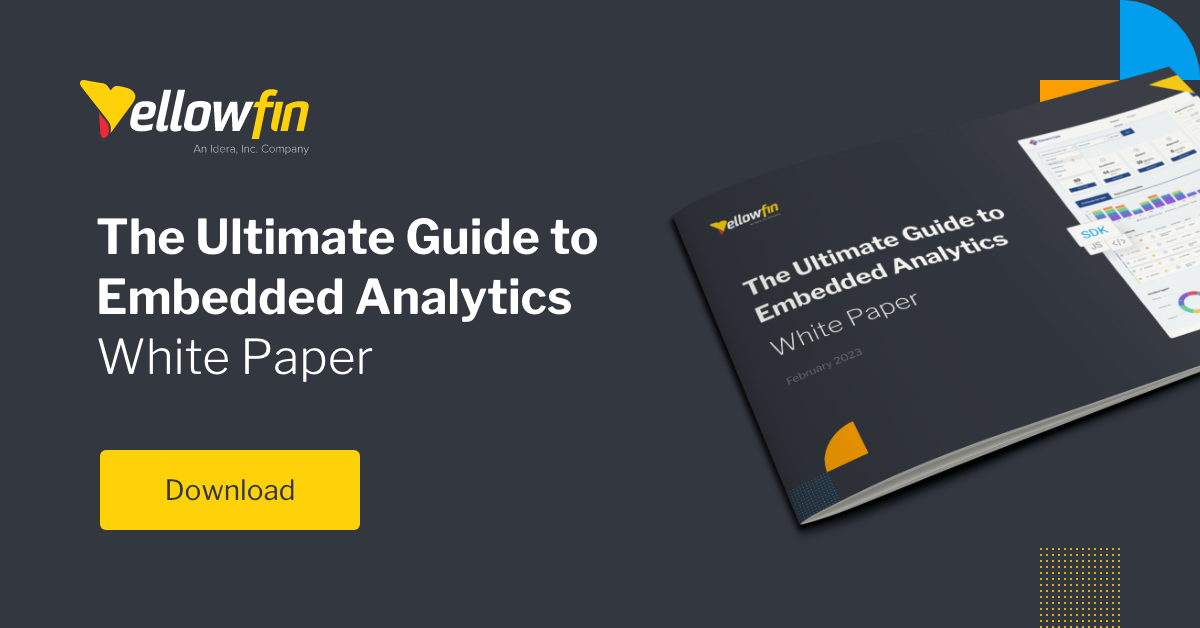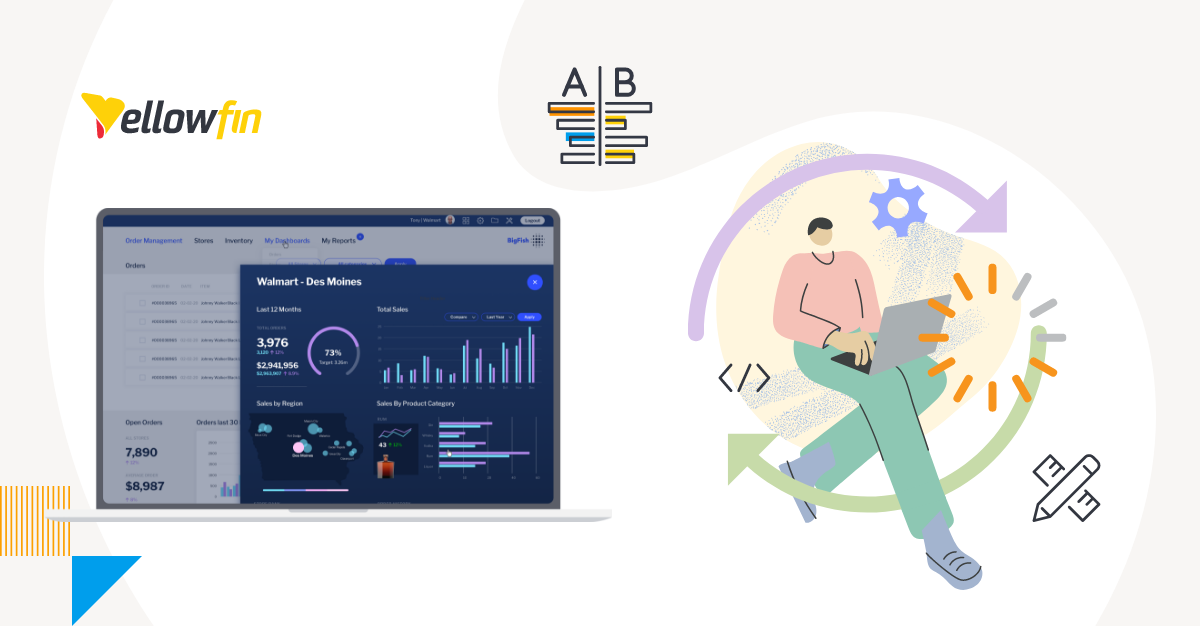TL;DR
Building your own analytics gives you full control, but it’s costly, slow, and drains focus from your core product. Buying an embedded analytics solution like Yellowfin lets you move faster, monetize sooner, avoid technical debt, deliver a polished user experience, and rely on proven security and compliance (all while keeping your team focused on what makes your product unique).
Ready to see it in action?
Don’t waste years reinventing the wheel. Get a demo of Yellowfin Embedded Analytics and see how quickly you can deliver powerful, white-labeled analytics your users will love.
Blog Contents
hide
Build or buy: What is worth the cost?
The build vs buy analytics debate feels like one of those persistent life questions: Do you build a custom home from the ground up, or buy a beautiful house that's move-in ready? For ISVs and enterprises today, that's exactly the choice you face when it comes to adding analytics to your software. We all know analytics isn't a "nice-to-have" anymore. It's the lifeblood of a competitive product and a smart, efficient workforce. Your users and customers need insights, and they need them now. The real question isn't if you'll deliver analytics, but how. On one side, you have the path of the builder. You need to gather the right team, lay the foundation, and meticulously craft every feature to your exact specifications. It’s a huge undertaking that requires serious time, money, and expertise.
On the other side, there's the path of the partner. You team up with an expert, a business intelligence (BI) vendor whose entire purpose is to build best-in-class analytics. Their product, often called embedded analytics, is designed to plug right into your existing application, giving you instant access to powerful features without the heavy lifting.
So, how do you choose?
It all comes down to a core question: Is your need so unique that it's worth the immense investment of building from scratch, or will a pre-built solution get you where you need to go more efficiently?
Let's walk through the key considerations together to help you move forward.
On one side, you have the path of the builder. You need to gather the right team, lay the foundation, and meticulously craft every feature to your exact specifications. It’s a huge undertaking that requires serious time, money, and expertise.
On the other side, there's the path of the partner. You team up with an expert, a business intelligence (BI) vendor whose entire purpose is to build best-in-class analytics. Their product, often called embedded analytics, is designed to plug right into your existing application, giving you instant access to powerful features without the heavy lifting.
So, how do you choose?
It all comes down to a core question: Is your need so unique that it's worth the immense investment of building from scratch, or will a pre-built solution get you where you need to go more efficiently?
Let's walk through the key considerations together to help you move forward.
1. Time to market and opportunity cost
When you choose to build an analytics solution in-house, you're committing valuable engineering resources to a project that isn't your core business. This isn't just about the months or years of development time. It's about the opportunity cost. Every developer hour spent on building dashboards, data connectors, and data visualization tools is an hour not spent on enhancing your primary software product, fixing bugs, or developing a game-changing feature that sets you apart. You'll also need a plan for ongoing maintenance, updates, and bug fixes. This resource drain can be substantial, and if you don't have the right expertise in-house, you might face long delays and unexpected costs.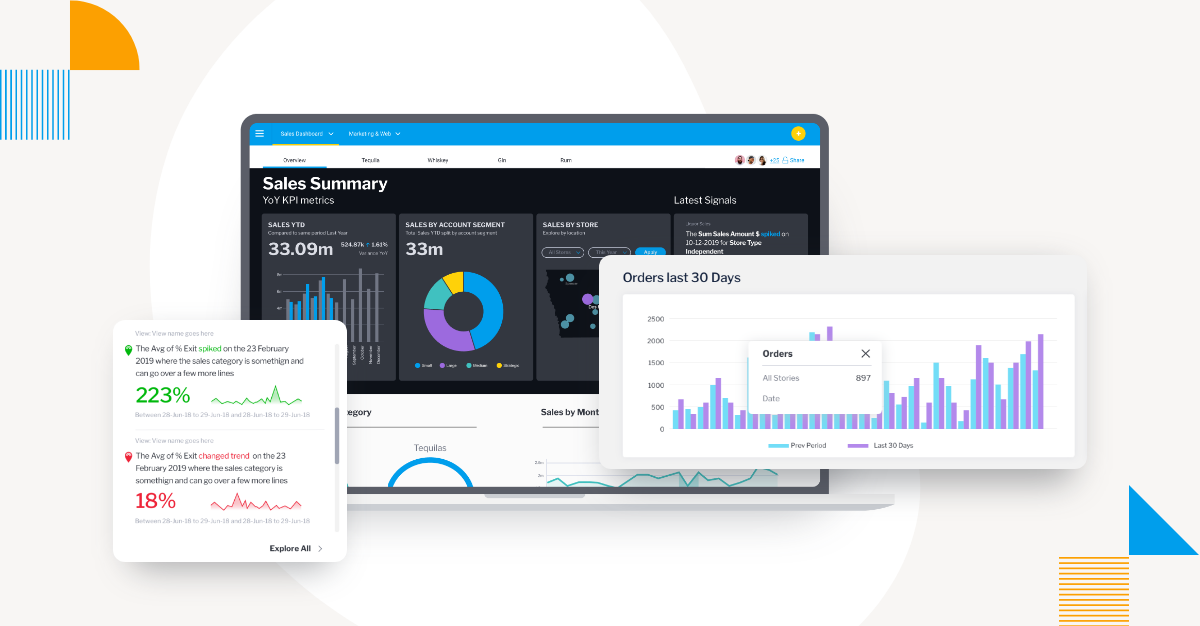 Choosing to buy analytics, however, shifts this burden to the vendor. You’re leveraging their pre-built infrastructure, SDKs, and expertise to deliver sophisticated analytics capabilities in weeks, not years.
Embedded analytics solutions like Yellowfin go a step further, allowing you to white-label analytics and deeply customize the solution to the look and feel of your app, making the integration seamless and appear as a natively built tool.
All of this allows your team to stay laser-focused on your core value proposition while still providing a data-rich experience to your customers. The speed you gain lets you get to market faster and address your complex requirements without derailing your software product roadmap.
Choosing to buy analytics, however, shifts this burden to the vendor. You’re leveraging their pre-built infrastructure, SDKs, and expertise to deliver sophisticated analytics capabilities in weeks, not years.
Embedded analytics solutions like Yellowfin go a step further, allowing you to white-label analytics and deeply customize the solution to the look and feel of your app, making the integration seamless and appear as a natively built tool.
All of this allows your team to stay laser-focused on your core value proposition while still providing a data-rich experience to your customers. The speed you gain lets you get to market faster and address your complex requirements without derailing your software product roadmap.
2. Monetization and revenue streams
Adding analytics can be a powerful way to create new revenue streams, but that’s easier said than done. Building your own solution requires a significant upfront investment with no guaranteed return. You must determine how to productize it, what to charge for it, and how to position it in the market. It's essentially a new product line with all the associated R&D, sales, and marketing challenges, distracting from your primary business model. The risk of this investment not paying off can be a major source of unnecessary pain. Buying an analytics solution allows you to leverage a proven BI platform to quickly monetize your data. Many embedded analytics vendors offer flexible licensing and pricing models that enable you to bundle analytics as a premium feature, a tiered offering, or even a separate product.
This strategy allows you to immediately turn your data into a valuable, revenue-generating asset without the heavy lift of product development. The vendor handles the platform, and you handle the monetization, giving you a faster, less risky path to profitability.
Related reading: The Future of Embedded BI - Customization Without the Overhead
Buying an analytics solution allows you to leverage a proven BI platform to quickly monetize your data. Many embedded analytics vendors offer flexible licensing and pricing models that enable you to bundle analytics as a premium feature, a tiered offering, or even a separate product.
This strategy allows you to immediately turn your data into a valuable, revenue-generating asset without the heavy lift of product development. The vendor handles the platform, and you handle the monetization, giving you a faster, less risky path to profitability.
Related reading: The Future of Embedded BI - Customization Without the Overhead
3. Product roadmap and technical debt
Your product roadmap is the blueprint for your future success, but building an in-house analytics solution inevitably adds technical debt. The team you assign will be responsible for continuous maintenance, bug fixes, and feature updates. This ongoing burden can slow down your innovation cycle, as resources are diverted from future-looking projects. When you buy an analytics solution, the vendor's product roadmap becomes your asset. They are dedicated to continuously improving the platform, adding new data connectors, improving performance, and developing cutting-edge features.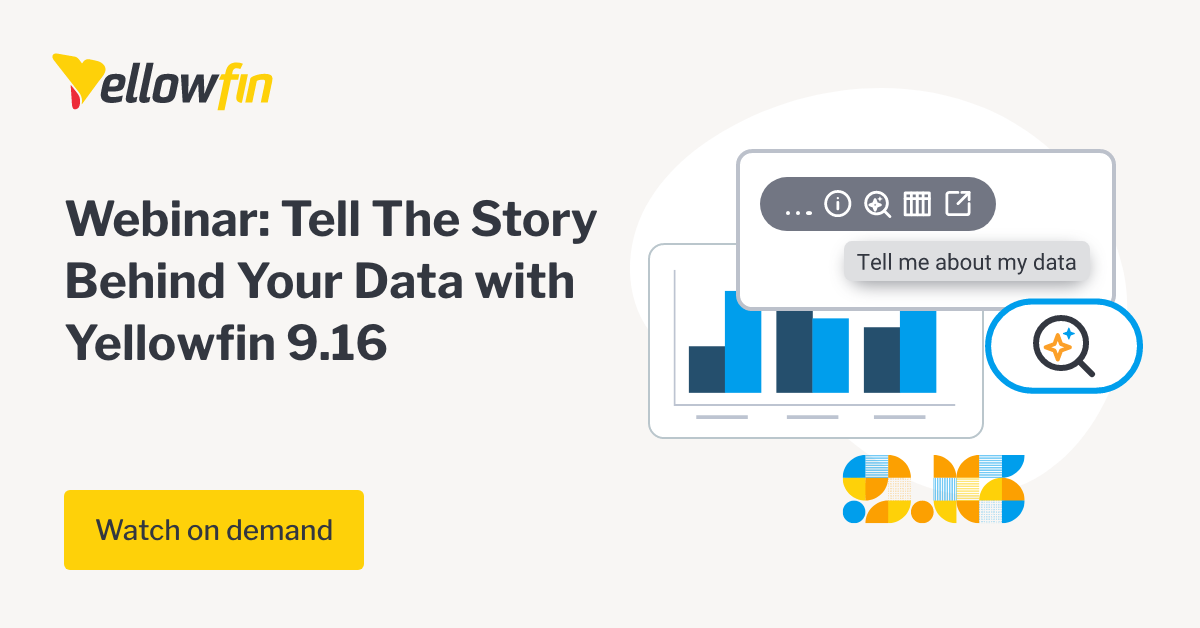 You're getting a mature and standardized product often built on industry best practices, and the best come with a wealth of sophisticated features (such as augmented analytics and data storytelling tools) designed to streamline data exploration for non-technical business professionals - in addition to providing the latest business intelligence dashboards and data visualization capabilities.
These are all things that can’t be easily replicated, let alone maintained in your roadmap, if your business isn’t ready to commit.
Buying analytics ultimately provides the benefit of this constant innovation without the associated cost or resource drain, while freeing up your development team to focus on what truly differentiates you in the market.
You're getting a mature and standardized product often built on industry best practices, and the best come with a wealth of sophisticated features (such as augmented analytics and data storytelling tools) designed to streamline data exploration for non-technical business professionals - in addition to providing the latest business intelligence dashboards and data visualization capabilities.
These are all things that can’t be easily replicated, let alone maintained in your roadmap, if your business isn’t ready to commit.
Buying analytics ultimately provides the benefit of this constant innovation without the associated cost or resource drain, while freeing up your development team to focus on what truly differentiates you in the market.
4. User adoption and customer experience
Ultimately, the best analytics are the ones your users actually adopt. A poorly designed or clunky homegrown analytics solution can lead to frustration and low usage, rendering your investment worthless. Creating a seamless, intuitive user experience (UX) for analytics requires specialized expertise in data visualization, user research, and interface design - skills your core development team may not (understandably) possess.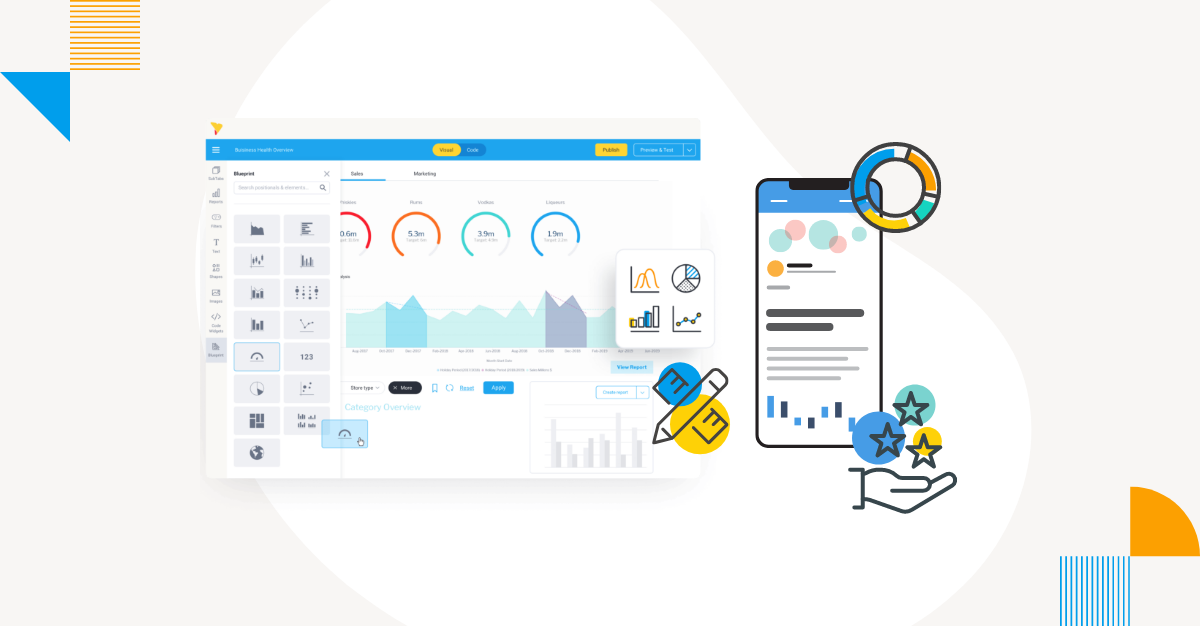 On the other hand, a purchased solution from a specialized analytics vendor is designed with a singular focus on user experience. These platforms are the result of years of refinement, user testing, and feedback from thousands of customers, often collected in dedicated communities (such as Yellowfin Community). They offer a polished, intuitive interface that encourages higher user adoption.
On the other hand, a purchased solution from a specialized analytics vendor is designed with a singular focus on user experience. These platforms are the result of years of refinement, user testing, and feedback from thousands of customers, often collected in dedicated communities (such as Yellowfin Community). They offer a polished, intuitive interface that encourages higher user adoption.
5. Data security and compliance
Building an analytics solution means you are fully responsible for every aspect of data security, from access controls to encryption and regulatory compliance (like GDPR, CCPA, or HIPAA). This requires a dedicated security team and constant vigilance to guard against evolving threats and ensure you meet all legal requirements. The pain of a single breach or compliance failure can be catastrophic, both financially and to your reputation.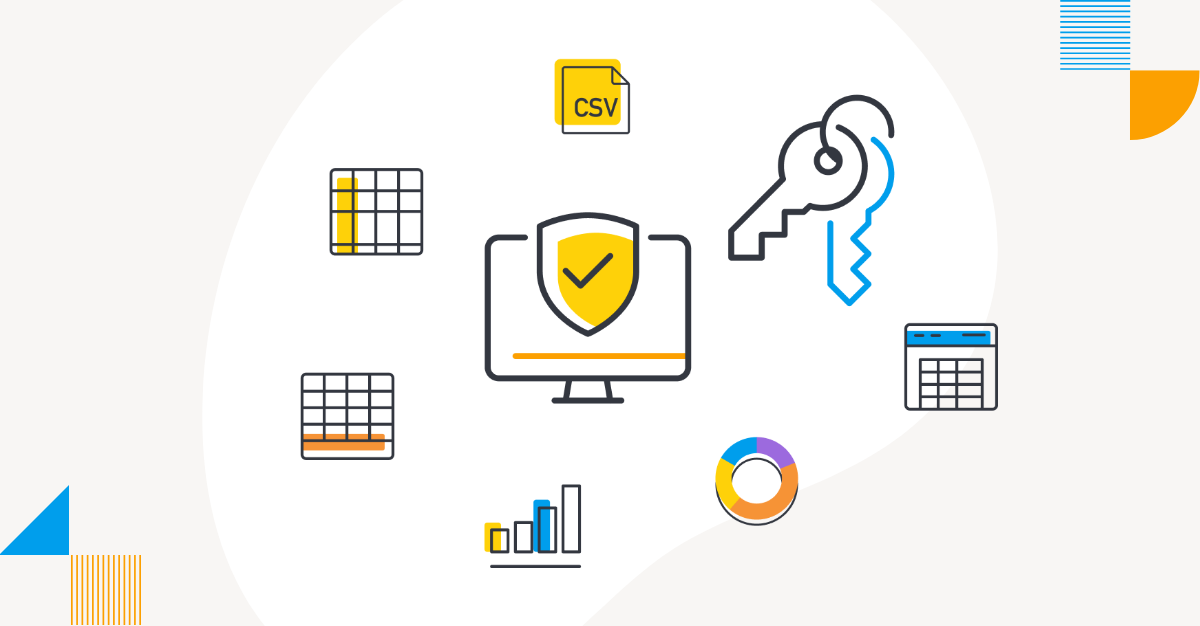 By buying a solution from a reputable vendor, you are partnering with a company whose entire business model depends on providing a secure and compliant platform. Vendors such as Yellowfin have robust security certifications (like ISO 27001 or SOC 2), a dedicated security team, and a deep understanding of global data privacy laws.
While you must still conduct due diligence, this partnership can significantly de-risk your data operations and provide a level of security expertise and data governance that would be incredibly expensive and challenging to build in-house.
By buying a solution from a reputable vendor, you are partnering with a company whose entire business model depends on providing a secure and compliant platform. Vendors such as Yellowfin have robust security certifications (like ISO 27001 or SOC 2), a dedicated security team, and a deep understanding of global data privacy laws.
While you must still conduct due diligence, this partnership can significantly de-risk your data operations and provide a level of security expertise and data governance that would be incredibly expensive and challenging to build in-house.
This automated approach eliminates the bias and time constraints of manual monitoring. You catch problems and opportunities as they emerge, not weeks later during quarterly reviews. Important discoveries that might otherwise go unnoticed become immediate inputs for your data stories.
Making the right choice for your business
Ultimately, the right choice depends on your specific situation. There is no one-size-fits-all answer when it comes to building or buying analytics. But there are many considerations to address. Which is why we built our Ultimate Guide to Embedded Analytics to help guide you through the entire buy or build analytics process and all of its many options, from planning to implementation, step-by-step.